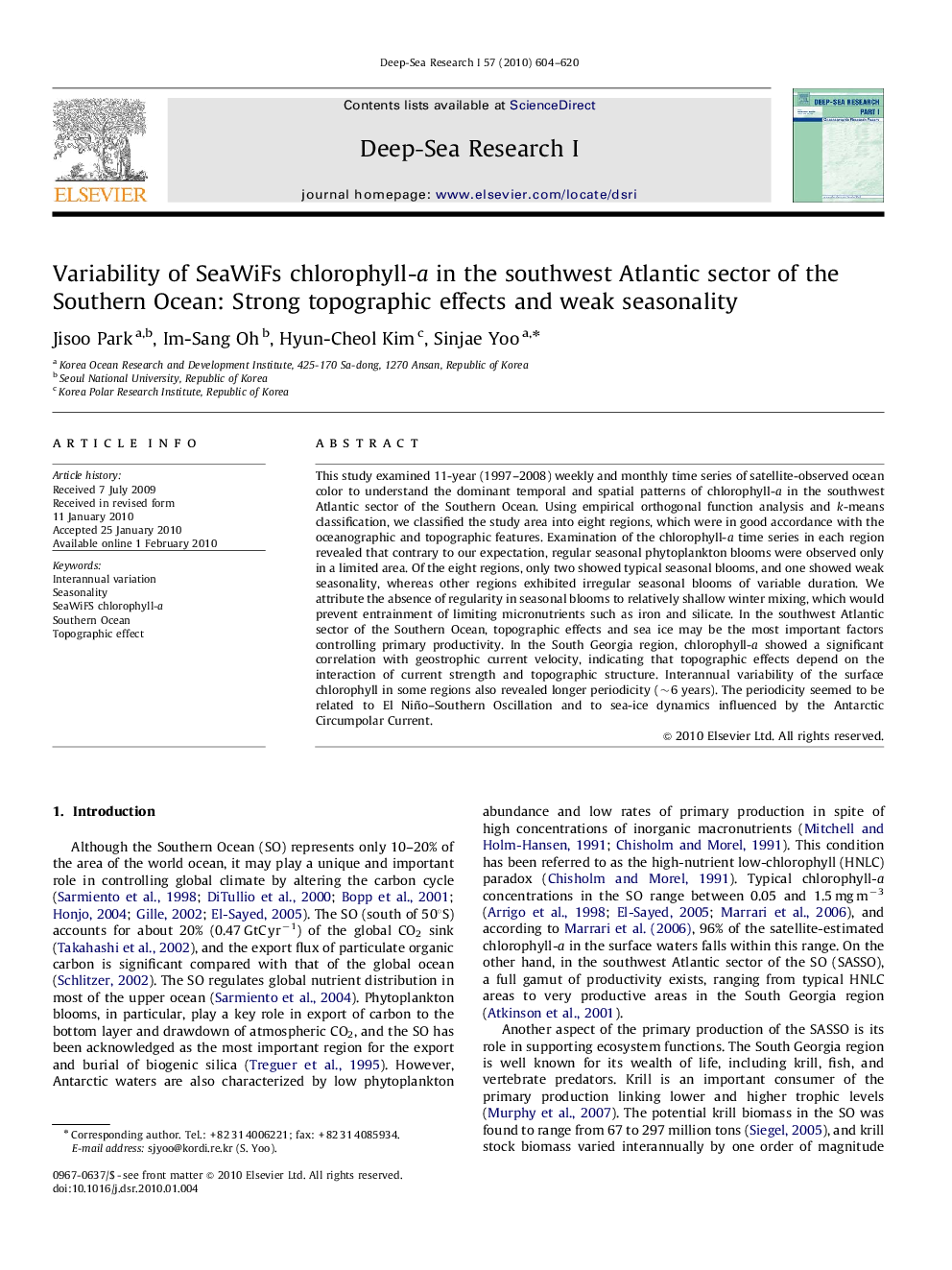| Article ID | Journal | Published Year | Pages | File Type |
|---|---|---|---|---|
| 4535126 | Deep Sea Research Part I: Oceanographic Research Papers | 2010 | 17 Pages |
This study examined 11-year (1997–2008) weekly and monthly time series of satellite-observed ocean color to understand the dominant temporal and spatial patterns of chlorophyll-a in the southwest Atlantic sector of the Southern Ocean. Using empirical orthogonal function analysis and k-means classification, we classified the study area into eight regions, which were in good accordance with the oceanographic and topographic features. Examination of the chlorophyll-a time series in each region revealed that contrary to our expectation, regular seasonal phytoplankton blooms were observed only in a limited area. Of the eight regions, only two showed typical seasonal blooms, and one showed weak seasonality, whereas other regions exhibited irregular seasonal blooms of variable duration. We attribute the absence of regularity in seasonal blooms to relatively shallow winter mixing, which would prevent entrainment of limiting micronutrients such as iron and silicate. In the southwest Atlantic sector of the Southern Ocean, topographic effects and sea ice may be the most important factors controlling primary productivity. In the South Georgia region, chlorophyll-a showed a significant correlation with geostrophic current velocity, indicating that topographic effects depend on the interaction of current strength and topographic structure. Interannual variability of the surface chlorophyll in some regions also revealed longer periodicity (∼6 years). The periodicity seemed to be related to El Niño–Southern Oscillation and to sea-ice dynamics influenced by the Antarctic Circumpolar Current.
